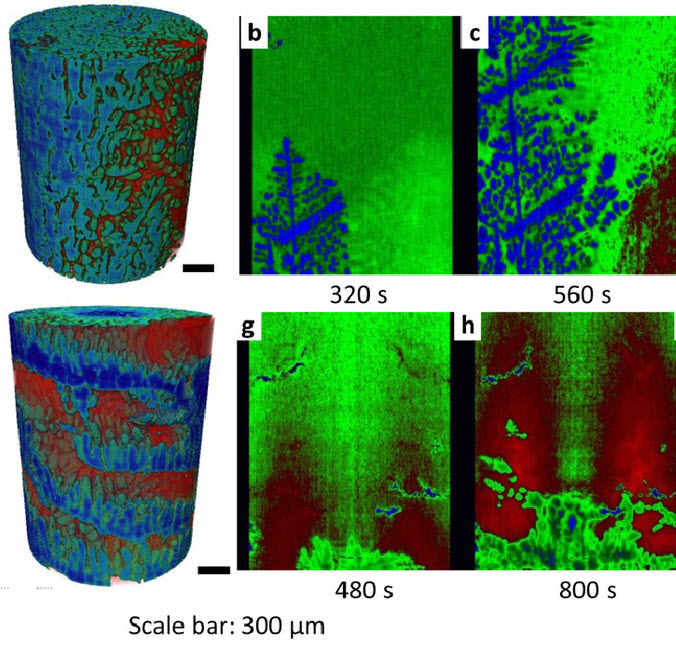Revealing the mechanisms by which magneto-hydrodynamics disrupts solidification microstructures

A key technique for controlling solidification microstructures is magneto-hydrodynamics (MHD), resulting from imposing a magnetic field to solidifying metals and alloys. Applications range from bulk stirring to flow control and turbulence damping via the induced Lorentz force. Over the past two decades the Lorentz force caused by the interaction of thermoelectric currents and a magnetic field, a MHD phenomenon known as Thermoelectric Magnetohydrodynamics (TEMHD), was also shown to drive inter-dendritic flow altering microstructural evolution. In this contribution, high-speed synchrotron X-ray tomography and high-performance computational simulation are coupled to reveal the evolution, dynamics and mechanisms of solidification within a magnetic field, resolving the complex interplay and competing flow effects arising from Lorentz forces of different origins. The study enabled us to reveal the mechanisms disrupting the traditional columnar dendritic solidification microstructure, ranging from an Archimedes screw-like structure, to one with a highly refined dendritic primary array. We also demonstrate that alloy composition can be tailored to increase or decrease the influence of MHD depending on the Seebeck coefficient and relative density of the primary phase and interdendritic liquid. This work paves the way towards novel computational and experimental methods of exploiting and optimizing the application of MHD in solidification processes, together with the calculated design of novel alloys that utilize these forces.